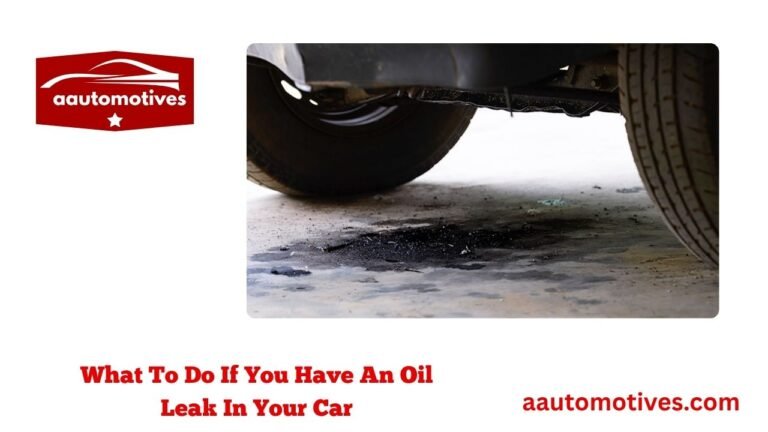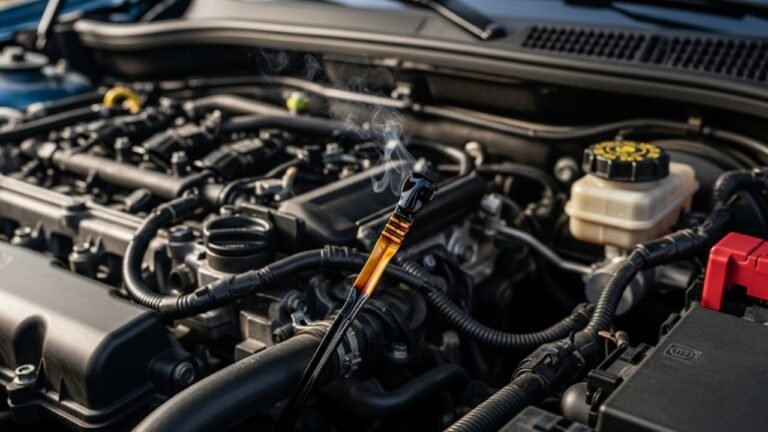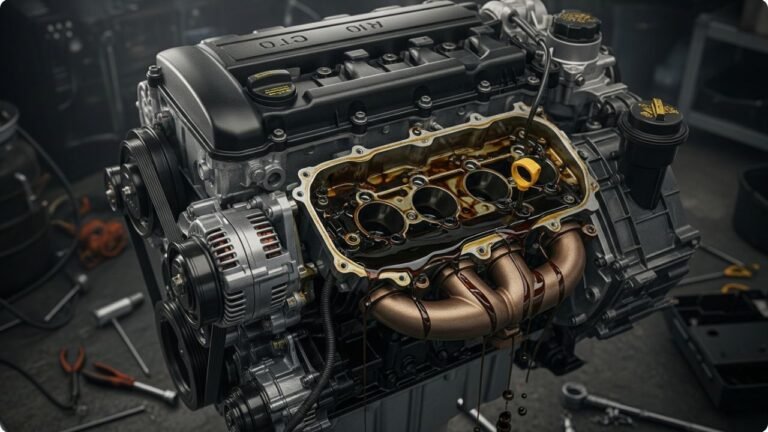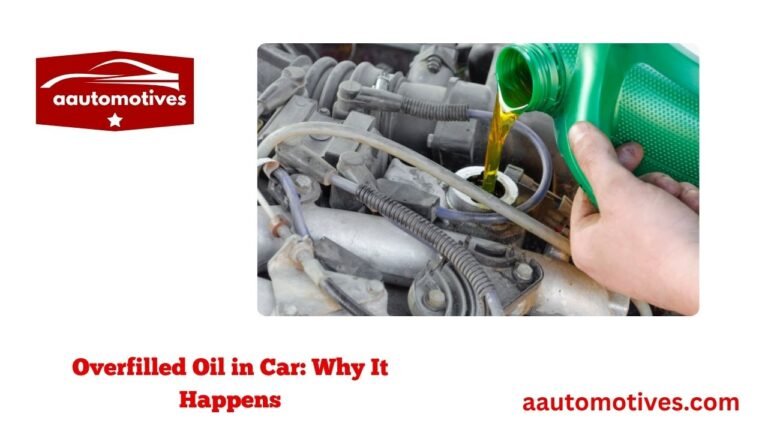Massive Oil Leak Under Car: What It Means
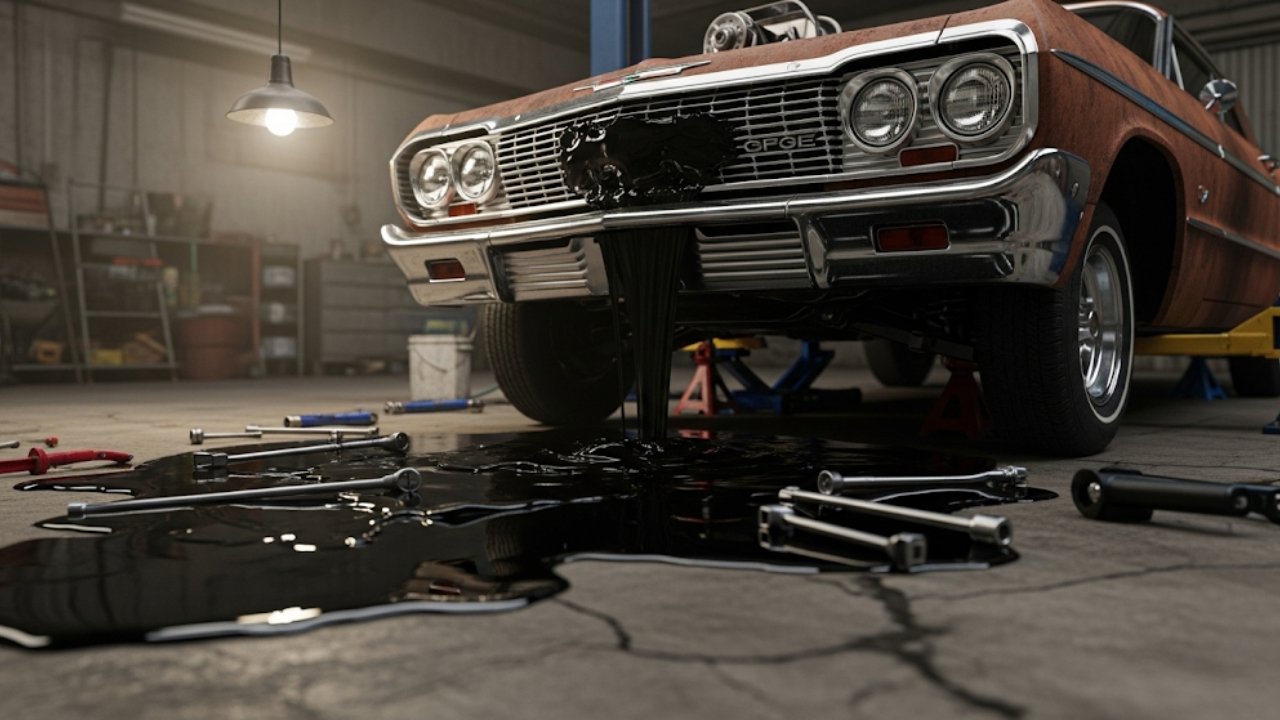
One day, I walked out with my morning cup of tea, ready to head out for work. Birds chirping, a fresh breeze in the air, and then—bam! My heart dropped. A shiny black puddle glared back at me from beneath my car. Not just a drip or two. A massive oil leak under car that looked like my engine had wept all night.
It’s one of those moments where you just freeze. You imagine repair bills, long hours at the mechanic, and worst-case scenarios involving engine failure. But take a deep breath. You’re not alone. Thousands of drivers deal with unexpected oil leaks every year, and most of them are fixable with the right approach.
In this guide, we’ll walk through what causes these large leaks, how to spot them early, what to do next, and how to prevent future ones. This isn’t just another technical article—it’s real talk with some real answers. Let’s dive in.
What Is a Massive Oil Leak Under Car?
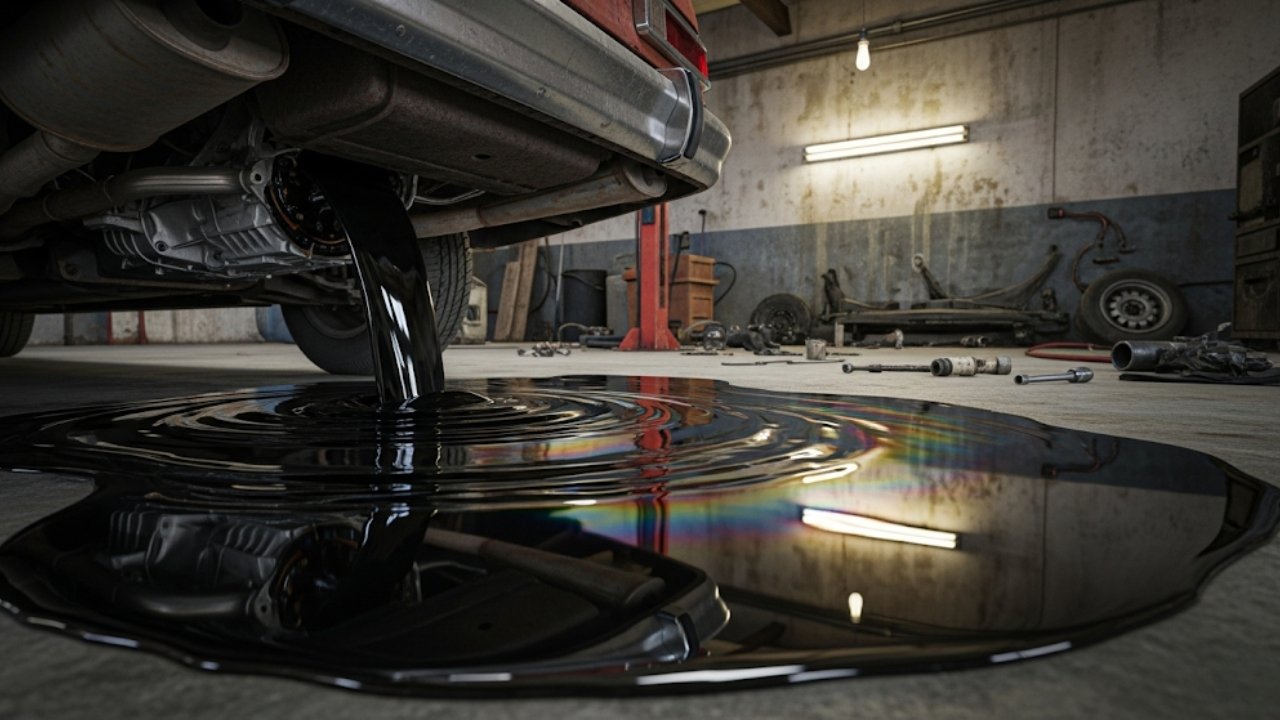
Here’s what usually characterizes a massive leak:
-
Large black or brown puddle under the car (bigger than a dinner plate)
-
Strong burnt oil smell
-
Low oil level on dipstick after short drives
-
Oil warning light or engine light on
-
Smokes from the engine bay or exhaust
These leaks are more than just messy. They’re dangerous. They reduce engine lubrication, overheat your engine, and can even damage gaskets, pistons, or the crankshaft. In short, ignoring a big oil leak is like driving with a ticking time bomb under the hood.
What Causes a Massive Oil Leak Under Your Car?
So, what’s causing that slick driveway disaster? A massive oil leak under car can come from many places. But usually, it boils down to one of these:
1. Worn-Out Gaskets or Seals
Gaskets and seals are like the glue of your engine. Over time, heat and pressure make them brittle. Once they crack, oil escapes freely.
-
Valve cover gasket
-
Oil pan gasket
-
Rear main seal
These are common culprits for large leaks.
2. Loose or Broken Drain Plug
If you recently changed your oil and forgot to tighten the drain plug properly—or worse, stripped it—you’ll lose oil fast. This is a very common DIY mistake.
3. Cracked Oil Pan
Hit a rock? Drove over something sharp? That metal pan underneath could crack or dent, letting oil pour out like a tap.
4. Oil Filter Issues
An incorrectly installed or old oil filter can leak too. The rubber seal on the filter wears out, and the leak becomes serious over time.
5. Damaged Oil Cooler or Lines
Some cars have external oil coolers or lines that can rust, break, or get punctured.
Common Causes Table
| Cause of Leak | Severity | Repair Cost Estimate | Warning Signs |
|---|---|---|---|
| Valve Cover Gasket Leak | Moderate | $150–$300 | Burning smell, smoke, engine oil |
| Oil Pan Crack or Leak | High | $300–$700 | Visible puddle, fast oil loss |
| Rear Main Seal Failure | Severe | $600–$1200+ | Oil between engine & transmission |
| Loose Oil Drain Plug | Low | $10–$50 | Sudden leak after oil change |
| Faulty Oil Filter | Moderate | $30–$80 | Slow leak, visible oil near filter |
How to Identify Where the Oil Leak Is Coming From
Okay, you’ve found oil under the car. What next? Finding the source can save you hundreds. Here’s how to DIY a simple inspection before heading to the mechanic:
Step 1: Check the Oil Level
Pop your hood. Pull out the dipstick. If it’s below the minimum, you’ve lost a lot of oil.
Step 2: Look at the Color and Smell
-
Brown or black = Engine oil
-
Reddish = Transmission fluid
-
Yellow-green = Coolant
Oil has a very distinct burnt, chemical smell. If it smells sweet, it’s probably not oil.
Step 3: Peek Under the Car
Grab a flashlight. Check under the oil pan, around the drain plug, near the filter, and behind the engine block. You’ll often see a trail of shiny oil leading from the leak source.
Step 4: Use Cardboard
Park your car on a clean piece of cardboard overnight. The shape and color of the spot can help determine the leak’s origin.
Is It Safe to Drive With a Massive Oil Leak Under Car?
This one’s tricky. The short answer? No. The longer one? It depends on how massive the massive oil leak under car actually is.
Driving with a big oil leak can:
-
Overheat your engine
-
Cause permanent damage to pistons and bearings
-
Create a fire hazard if oil hits hot parts
-
Leave you stranded with a seized engine
If you see a puddle forming quickly or smell burning oil, stop driving immediately. Call for a tow. Trust me—repairing a leak costs way less than replacing an engine.
That being said, if the leak is slow and you’re keeping an eye on oil levels daily, you might drive short distances safely. But this is risky and not recommended.
What to Do Immediately After Spotting a Massive Oil Leak
Here’s what I did when I noticed a massive oil leak under car that morning:
1. Don’t Panic
Yes, it looks scary. But most leaks are fixable. Stay calm and don’t make it worse by starting the engine.
2. Check the Dipstick
If the oil level is near empty, do not start the car.
3. Clean Up the Spill
Use cat litter or sawdust to soak up the oil. This prevents stains and avoids slippery spots that can hurt someone.
4. Call a Mechanic or Tow Truck
This isn’t the time to guess. Let a professional check it out. Many mobile mechanics will come to you.
Preventive Maintenance Tips to Avoid Massive Oil Leaks
You’ve fixed the problem—or maybe you’re just trying to avoid one. Either way, prevention is always cheaper than repair. Here’s what works:
-
Change your oil regularly: Stick to the schedule. Fresh oil keeps seals healthy.
-
Use the right oil: Wrong viscosity or type can cause pressure build-up and leaks.
-
Inspect seals every 6 months: Especially around the oil pan and filter.
-
Tighten your oil plug: After every oil change, double-check it’s snug (but not overtightened).
-
Use OEM filters: Cheap ones often don’t seal well.
What Happens If You Ignore a Massive Oil Leak Under Car?
Let’s say you saw the leak, shrugged it off, and kept driving. What’s the worst that could happen? Sadly, quite a bit. Ignoring a massive oil leak under car can turn a small repair bill into a multi-thousand-dollar nightmare.
Here’s what’s at risk:
-
Engine Overheating: Oil helps cool your engine. Without it, parts grind, heat up, and wear down fast.
-
Engine Seizure: No oil = no lubrication. The metal parts can literally fuse together. Once seized, your engine is toast.
-
Damaged Pistons or Bearings: Even short trips with low oil pressure can permanently damage internal components.
-
Fire Hazard: Oil leaking onto the exhaust manifold or hot components can ignite.
-
Environmental Damage: Leaking oil contaminates soil, storm drains, and local waterways. It’s a silent environmental hazard.
I once met someone who kept topping off oil every week instead of fixing the leak. One day, he forgot to check the level. Thirty minutes into his drive, the engine died. The damage? $4,000. All for a leak that could’ve been fixed for $300.
DIY Fix or Mechanic: What’s the Best Move?
You’re probably wondering, “Can I fix this myself?” That depends on where the leak is coming from and how comfortable you are under the hood.
You Can DIY If:
-
The leak is from the oil drain plug
-
The oil filter needs replacement
-
There’s a loose valve cover bolt
In these cases, a socket wrench and a YouTube tutorial might be all you need. Just make sure you’re using the right torque and sealing washers.
Let the Pros Handle It If:
-
The leak is from the rear main seal
-
Your oil pan is cracked
-
The leak source is deep inside the engine
These repairs often require engine lifting, special tools, or disassembling transmission parts.
Quick Fix vs Long-Term Repair Table
| Fix Type | DIY-Friendly | Tools Needed | Estimated Time | Long-Term Solution? |
|---|---|---|---|---|
| Replace drain plug | Yes | Wrench, new plug/gasket | 30 minutes | Yes |
| Replace oil filter | Yes | Oil wrench, new filter | 20 minutes | Yes |
| Valve cover gasket | Maybe | Torque wrench, sealant | 1–2 hours | Yes |
| Oil pan replacement | No | Lift, jack stands | 4+ hours | Yes |
| Rear main seal | No | Professional tools | 6–10 hours | Yes |
How Much Does It Cost to Repair a Massive Oil Leak?
Let’s talk numbers. The cost of fixing a massive oil leak under car varies based on the leak’s source, car make/model, and labor rates in your area.
Typical Costs:
-
Oil filter or drain plug: $10–$50
-
Valve cover gasket: $150–$300
-
Oil pan replacement: $300–$700
-
Rear main seal: $600–$1,200+
-
Oil cooler or hoses: $200–$500
If you’re unsure, ask for a detailed quote. Some mechanics even offer free inspections. Also, avoid shops that pressure you without explaining the issue in plain language.
Common Myths About Oil Leaks (And the Truth)
You’d be surprised how many myths surround oil leaks. Let’s bust a few of the big ones:
-
“It’s normal for old cars to leak.”
Not true. Age might increase the chance, but consistent oil leaks mean something’s broken. -
“I’ll just top it off weekly.”
That’s a short-term band-aid, not a fix. It leads to bigger damage fast. -
“If there’s no oil light, it’s fine.”
Oil lights often come on after significant pressure loss. By then, damage may already be happening. -
“All leaks leave puddles.”
Not always. Some leaks drip onto hot parts and burn off before hitting the ground. -
“Oil leak stop products work permanently.”
Most of those are temporary and don’t fix cracked seals or gaskets. Use with caution.
A Checklist to Prevent Future Oil Leaks
Think of this as your car’s self-care routine. A little attention now prevents big issues later.
Oil Leak Prevention Checklist:
-
✅ Change your oil on schedule (every 3,000–5,000 miles)
-
✅ Use high-quality oil and filters (stick to your manual)
-
✅ Inspect under your car monthly for fresh leaks
-
✅ Check the dipstick weekly for level and color
-
✅ Watch for smells, smoke, or strange engine sounds
-
✅ Tighten drain plug and filter properly after oil changes
-
✅ Ask your mechanic to inspect seals every 6 months
Make it a habit. Add it to your calendar. A five-minute check today can save your engine tomorrow.
FAQs About Massive Oil Leak Under Car
1. Can I still drive with a massive oil leak under car?
It’s risky. If oil is dripping fast, driving can ruin your engine. Always check the dipstick first and call a mechanic if unsure.
2. What does a massive oil leak look like?
A shiny puddle under your car, usually brown or black. It may also have a strong burnt smell.
3. Is fixing an oil leak expensive?
It depends. Minor leaks like a loose drain plug are cheap. Larger repairs like rear seals can run $1,000+. Diagnosing it early saves money.
4. How long can I go with an oil leak?
The moment you notice a leak, it’s best to fix it. Driving even a few miles with low oil can cause damage.
5. Can I use oil leak stop products?
You can try them for minor leaks, but they don’t work on large leaks or cracked parts. They’re temporary, not permanent.
6. How do mechanics find oil leaks?
They use UV dye and black lights, pressure testing, and physical inspection to trace the leak to its origin.
7. Can weather cause oil leaks?
Yes! Cold weather can shrink seals, while hot weather increases pressure. Both conditions stress engine components.
8. What should I tell the mechanic?
Be specific. When did it start? How much oil is leaking? Does the car smell or smoke? The more details, the easier the fix.
Final Thoughts: Don’t Let a Leak Drain Your Wallet or Sanity
Discovering a massive oil leak under car can feel like the start of a disaster movie. But with the right info, it doesn’t have to end that way.
Whether it’s a loose plug, a faulty gasket, or something deeper, the key is to act fast and stay calm. Think of it like a toothache—it won’t get better by ignoring it. But with the right attention, your car will be back to normal in no time.
Take it from me—what started as a scary driveway puddle turned into a learning moment I’ll never forget. You don’t need to be a mechanic. You just need to listen to your car, trust your instincts, and never overlook a leak.

